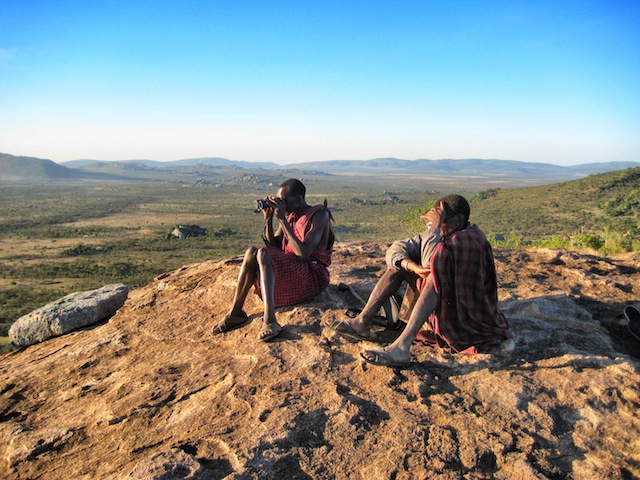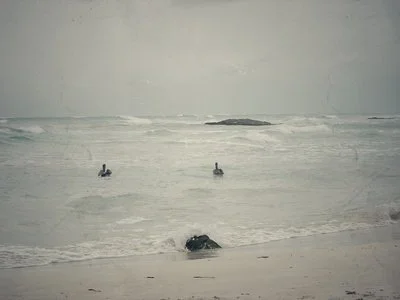Heels down. Toes out. Squeeze with calves, not knees. Lighten up on the reins. Sink your butt into the saddle. So began my first riding lesson at the Arizona Cowboy College in Scottsdale which was followed by instructions in grooming, shoeing, advanced riding techniques, and roping. And this was just a one-day primer to what other “city slickers” experience in their six-day cattle drive at the College -- but more on that later.
All in adventure travel
story and photos by Paul Ross
Getting to Myanmar (Burma) is a trip, but getting around while in-country can be an adventure.
During 18 days of travel, we rode in human-pedaled trishaws, rickety horse-drawn carriages, vintage trains, and boats of every imaginable size, shape and color. Squeezed into crowded truck-busses, we joined indigenous commuters, and used the smattering of Burmese phrases we picked up along the way to interact and become part of their day. In turn, they became part of our memories.
Much more than transportation, these conveyances provided an intimate glimpse of everyday life, a profound sense of place, and an authentic connection to this rapidly changing country.
Traveling with Eldertreks, an adventure travel company for travelers 50 and older, my wife, Judie, and I were able to step outside the tourist bubble and travel with the locals.
Here's the visual proof.
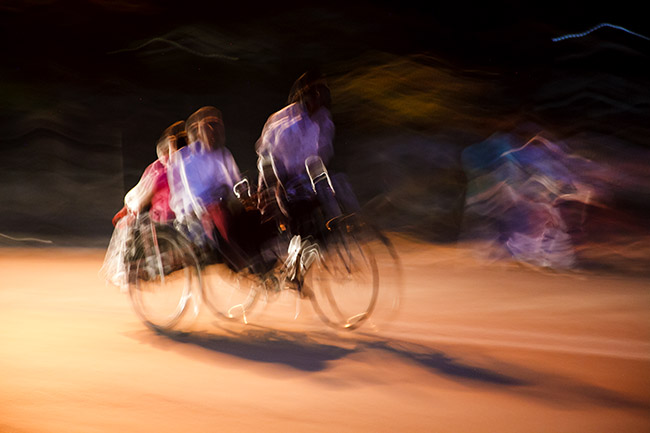
An old converted bicycle, with its five-inch seat not constructed with wide-beamed Americans in mind, and a bumpy dirt road make for a colorful experience, especially if you add in the black and blue marks on your backside. The peddler/driver's friend rode along, balancing on the bike's peg, as either a human GPS or a spare "engine." Far from "the days of Raj" luxury (the Brits colonized Myanmar as well as India), the trishaw is a practical taxi in a bustling, developing country and ––like all taxis everywhere–– it's best to negotiate the fare in advance of the trip. You want to help the local economy but--
A Hitchhiker's Guide to Namibia
The bakkie went over a large pothole and I was jolted awake, the shock making me inhale deeply and sharply. The air was hot. My throat and eyes stung from all the dust. The unbending road ran like a dagger through the heart of the desert. There was nothing else. Just us, the road, the desert, the sky and the burning sun, and the great weight of my hangover forcing itself in on my shriveled, raisin-like brain and lungs. I wondered for a second if we were heading towards the end of the world.
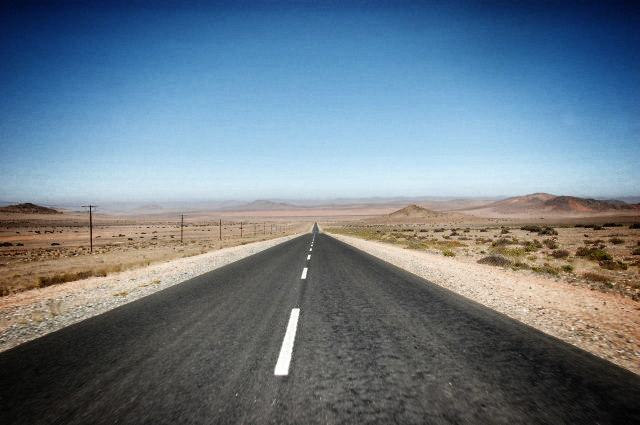
It had all been a terrible accident really. I knew almost nothing about Namibia except that there were a lot of sand dunes, and without a few too many drinks to lubricate the imagination and fire the yearning for adventure, it probably never would have happened. The truth is though, I could probably say the same about a lot of my trips over the years, especially the most interesting ones.
It had all started in what might loosely be called the ‘town’ of Springbok, a little way back across the border. I was there on a job and had confessed my ignorance of Namibia to a local Afrikaans prospector’s son named Rico, who I had got talking to at the local bar. His head was similar in size and shininess to a watermelon, yet still looked disproportionately small for his enormous frame.
Now there I was in the back of his battered old vehicle hurtling northward away from the South African border like a bat out of hell, still not entirely sure where I was headed or why. And good old Watermelon Head was at the helm up in front of me, his equally large wife bumping along in the seat next to him and occasionally barking what I could only imagine were strong Afrikaans expletives at her husband. But still he went bravely on, potholes and abuse or no, taking me ever deeper into the burning heart of the unknown.
by Fyllis Hockman
"It can be a difficult journey. If you have a cold, cough or sniffle, don’t even bother lining up. Good hiking boots and a walking stick are a must. Bring plenty of water. Be sure to stay at least 25 feet away. Remember these are wild animals. If we need to carry you out, that will cost an extra $300."
I was already intimidated by the pre-trek briefing and we hadn’t even started on our mountain gorilla expedition, which was part of a 16-day tour to southwestern Uganda sponsored by ElderTreks. The 25-foot rule, I learned, was for both their protection and ours. Sharing 98.4 percent of our DNA, the gorillas are very susceptible to human-borne illnesses. We were carriers and they had to be protected from us. They were wild animals and we had to be protected from them. A fair quid pro quo. Thus, eight humans a day are allowed to visit a gorilla group for no longer than an hour. Works for us; works for them.
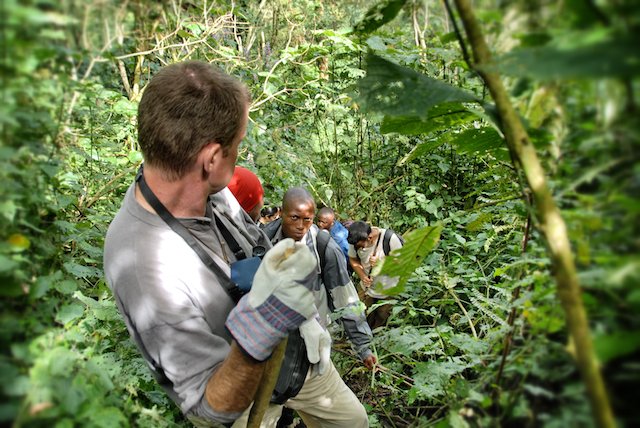 Gorilla trekkers ascending one of many steep climbs.
Gorilla trekkers ascending one of many steep climbs.
This is not exactly a drive-by photo op. With a vigorous trek of 1-7 hours, depending upon where the gorillas are that day, you have to REALLY want to see them. But even with visitation restricted to an hour, it is usually well worth the effort.
What If Something Happens?
Squeezed between napping young people in a tour van, I doubted that this Virgin del Carmen dance festival weekend was a good idea. I’d finished my bottle of water. The driver was swerving down rough roads toward a Peruvian village 3,200 meters high. Weak and dehydrated from several medications, I felt nausea with each lurching switchback.
by Jane Spencer
“Guess what? I rode an elephant in Nepal!”
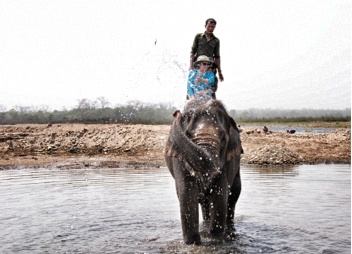 My five-year-old grandson was not impressed. “You rode one of those dirty, smelly things?” He’s very sensitive to unfamiliar odours and textures.
My five-year-old grandson was not impressed. “You rode one of those dirty, smelly things?” He’s very sensitive to unfamiliar odours and textures.
“Well, we gave her a bath,” I elaborated, over the phone.
Weeks later, I was still thrilled with my visit to Chitwan National Park in Nepal. The park, located in the terai or subtropical lowlands of the country, is a UNESCO World Heritage Site with a diversity of ecosystems (forests, ox-bow lakes and flood plains), animals (rhinos, sloth bears, deer, crocodiles), and birds (hornbill, kingfishers and peacocks). Elephant numbers there have grown to fifty. They live in a protected environment in exchange for safari labour, with a guarantee they won’t be transported to zoos or hunted for ivory.
It was my first safari and my first contact with elephants. Our group of four was guided to a platform with stairs which we took turns mounting, before lowering ourselves into a box frame roped around the elephant’s girth. The elephant trainer, or mahout, wielded his sharp metal hook and shouted an order, then we were off into the grasslands to search for one-horned rhinos, and maybe, if we were lucky, a Bengal tiger.
by Laura Fuller
Ron’s blue eyes were bloodshot and watering when he returned to the group. His cheeks were sunburned, his hair sun-bleached. He shoved his hands in the pockets of his white hooded sweatshirt, an act of 13-year-old toughness. He and Mary had volunteered to eat the goat’s kidneys, not because they’d wanted to, but because peers’ opinions outweigh adolescent reason. Mary now smiled proudly in a pack of incredulous girls. Ron fought to put the texture of warm, raw goat kidney behind him and move on with his life, but I could see that he was struggling to gain control of his gag reflex. Kyle offered to walk with him back to the tents, stoically, so as not to make Ron feel weak.
I watched them walk away, their shadows long in the evening grass, and turned back to the other 20-some seventh-graders, all of them perplexed as to how to receive this cross-cultural gift. They were outlined against a horizon of royal blue Tanzanian sky, high above tufts of trees and shrubs on the rocky terrain below. The high rocks on which we stood began to glow reddish in the setting sun. This, I predicted, was both the height and the conclusion of my short, ridiculous teaching career in Dubai.
The kids had all chosen to observe the ritual slaughter of this goat, not wanting to be cowardly among the courageous or rude to the Maasai guides. After sixteen hours of Serengeti driving from the nearest city, we were lucky to have the Maasai patrolling our campsite’s perimeter every fifteen minutes at night to ensure our safety. They silently taught our students to carve spears and showed us the soft cave in the bush where they held their councils.
The seventh-graders, from Dubai – who actually came from all over the planet – were upper-class, elite, and as such, polite and appreciative. They were first inquisitive: goat slaughter? And then horrified: goat slaughter.
Spain is Earth’s version of The Biggest Loser.
It’s hard to believe that Spain, a country that today is smaller than the state of Texas, once ruled an empire covering all of Central America, much of the US and South America, parts of the Caribbean, bits of Europe and even some outposts in Asia.
That’s a lot of empire to lose.
Remnants of the former empire are everywhere evident in Latin America, however, where Spanish remains the dominant language, where the culture and food retain heavy Spanish influence and where Roman Catholicism, the religion imposed on native civilizations at the often bloody point of a sword, remains the overwhelmingly dominant religion.
Even Cusco, a small city today but once the capital of the mighty Incan Empire, boasts 17 cathedrals for its 350,000 residents.
A couple of them are particularly fascinating, and a little funny.
by Maureen Elizabeth Magee
“No, Dad. I won’t do anything foolish. Yes, I will be sensible.”
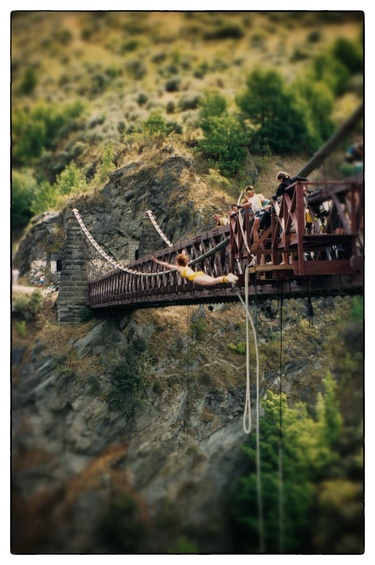 My last conversation before leaving Canada.
My last conversation before leaving Canada.
I sank into the airplane seat with relief. The decision had been made, fears conquered, and all the loose ends of planning a solo traipse around the world were tied up. I was a sensible woman; middle-aged, newly divorced and quite practical. Although some argued that quitting a management job to travel for a year was not practical. And others added that selling my home in order to finance the trip did not fall into the category of judicious. And many, many people pointed out that attempting to give up my five-star princess habits to travel on a shoestring was just asking for trouble.
I buckled my seat belt. None of them could find me now. No more concerned pleas or pointed observations about my lack of travel experience. It was just me and this Air New Zealand jet - a magic carpet – about to rescue me. Rescue me from . . . from what? Just what did I need rescuing from? A normal life? A practical life? A sensible life. A ‘follow-the-rules’ life that had recently let me down.
A low rumble of power hummed through the plane and the flight attendant began to make her announcement, pulling me away from the past. The past didn’t matter anymore. The reasons for my break-away trip didn’t matter. Only the accelerating whine of the engines mattered. It was all out of my control right now. I was tethered to nothing and that was a surprisingly comforting thought.
The Primeval Waters of Bahia de Ascension
On the first trip I made with my family to the Yucatan in 1973, tourism was virtually unknown. It was prior to the building of the Cancun airport and the only people who ventured down to this part of the world used cars or trucks on the little-traveled roads. Those existing roads were rarely paved once you got off the main two-lane highway.
Running Aground in British Columbia
by Kristine Mietzner
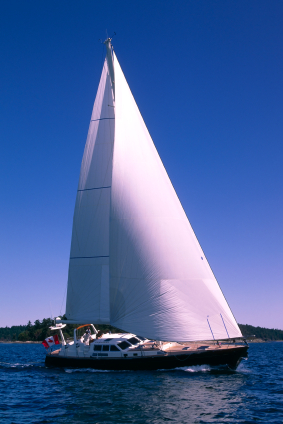 I dropped the bright white main sail, secured the halyard, tied six marine blue nylon ties around the sail’s bright white folds, and finally, stepped back into the cockpit. The sailboat purred as my children, their father, and I approached Oak Bay Marina under engine power.
I dropped the bright white main sail, secured the halyard, tied six marine blue nylon ties around the sail’s bright white folds, and finally, stepped back into the cockpit. The sailboat purred as my children, their father, and I approached Oak Bay Marina under engine power.
A bald eagle soared high above us, a curious raven cawed, flying above the mast, and a gull landed on the bow, checking us out.
Standing in the cockpit of the Sagale on a sun-filled August afternoon, Mark and I prepared to dock near Victoria, British Columbia. In the main salon 14-year-old Anna read Little Women while eight-year-old Ben played with Legos on the cabin floor.
Mark looked at the water, met my eyes, and called, “Read the depth meter!”
Scanning the red numbers on the black box attached to the cockpit wall, I said, “Thirty feet.” We slowly moved toward the marina.
“What does it say now?” Mark asked.
“Twenty feet.” A few moments later I called, “Fifteen,” in a more concerned tone. As the depth grew shallower, I shouted, “Thirteen! Mark, it’s not deep enough. Turn around! We’ll hit bottom. Get us in reverse.”
“We’re fine,” he replied. “That’s only the distance from the tip of the keel on down.”
“Not! It’s the distance from the water line to the bottom? We’re going to hit bottom! See for yourself,” I said.
We both looked over the rail and saw the sea floor through the clear, translucent, aqua water. The ginger-colored sand appeared as close as ten feet but it was difficult to be certain with the sunlight refracting through the water. In any case, it was far too late to stop the forward motion of the vessel. I glared at Mark as he repeated, “We’re fine. We’re fine.”
He is so wrong! This is so typical and here I am trapped on this boat with him.
words + photos by Barbara Aman
We arrived late at night at the field office of the nonprofit, a crumbling cement structure with a few rooms and a few rusted bed frames with torn, flattened pads. I was here to document the progress of a multinational water-supply project in this drought-challenged desert region in India’s western Rajasthan state. No luxury hotel here.
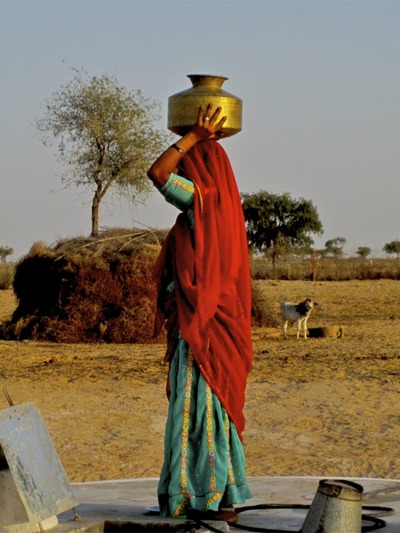 Up before sunrise the next morning we first visited water catchment areas, where large areas were dug out a few feet down, the women wielding picks, the red dirt transported away with beat-up metal bowls by all available family members--typically grandparents and grandkids, who often worked together. The elder male stood at a distance, dressed in white--as if a maharajah from the past, leaning against his wooden cane--while the women, dressed in brightly patterned red saris, toiled behind him.
Up before sunrise the next morning we first visited water catchment areas, where large areas were dug out a few feet down, the women wielding picks, the red dirt transported away with beat-up metal bowls by all available family members--typically grandparents and grandkids, who often worked together. The elder male stood at a distance, dressed in white--as if a maharajah from the past, leaning against his wooden cane--while the women, dressed in brightly patterned red saris, toiled behind him.
It’s the women and girls who are most affected by the water shortage here. Many in the villages spend up to five hours a day walking to and from the closest well or storage tank, carrying water in their beat-up metal pitchers. Water for drinking, cooking, washing--it falls to them to fetch it, however far away it may be. Male/female roles are strictly cast here: Whatever it takes to keep the home and family running, it’s up to the females to get it done. At one point, Michael, my partner, had teasingly picked up one of the full water containers and placed it in my arms, and my legs almost crumpled. I could not imagine how these tiny women could carry these on their heads.
The next stop was a completed water catchment and storage area and as we drove up I could see the bright white paint job on the 12-foot round tank, jutting up about 2 feet from the ground, the lower half nestled tidily in the hard clay soil. A young woman stood atop it, quite shyly, covering her face with her tattered sheer sari while balancing her metal water jug adeptly atop her head. Her eyes seemed to bore through me, even in their shy state.
by Irene Lane
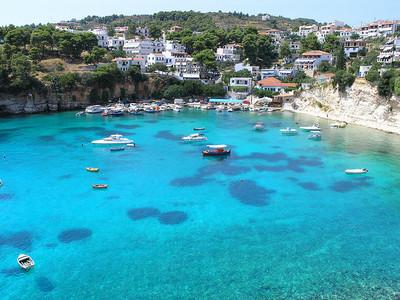 It started out as an experiment. Would I be able to travel with my six-year-old son, mother, and two aunts to a small Aegean island and actually be able to shoot a short documentary film about its ecotourism efforts in a week? The Greeks are known for many things – love of life, great food, proud history and genuine kindness, but they aren’t necessarily known for sticking to a timeline.
It started out as an experiment. Would I be able to travel with my six-year-old son, mother, and two aunts to a small Aegean island and actually be able to shoot a short documentary film about its ecotourism efforts in a week? The Greeks are known for many things – love of life, great food, proud history and genuine kindness, but they aren’t necessarily known for sticking to a timeline.
However, after a summer when the world was served numerous news stories about Greece’s near economic collapse and violent riots, I viewed it as a chance to both spend some special time with my family and shed some light on a little known good news story. Little did I suspect that the travel experience would energize me, educate my son and change a tiny island’s conservation funding prospects.
They certainly don’t make it easy to get to Alonissos. All told, the journey from Athens took two hours by bus and another three hours by boat – all of it extraordinarily scenic. We passed by some very picturesque islands including Skopelos (where the movie Mamma Mia was filmed) and, as we made our final approach toward Alonissos, some surprisingly choppy seas that reminded me of the movie Castaway, where the island was protected by a band of rough seas, yet also disconnected from the rest of the Aegean Sea.
Leaving It All Behind
To the outside world we had a beautiful life. There we were, living happily with our children in our lovely suburban home. We had interesting friends. What would possess us to leave it all and hit the road? But that’s what we did, launching ourselves into points unknown in the big red truck we bought to replace the suburban station wagon. It also replaced the 4 bedroom 2-1/2 bath home with a cab-over camper that provided just enough space for five people to sleep. Only one person, even if it was a child, was able to walk about at a time.
What we had in mind was simply to begin our personal odyssey with the ultimate destination unknown. Anyone can do it. Despite the prevailing opinion, it doesn’t take much, just the initial decision to find another way. That’s how the travel plan began. Leaving all the details open allowed us to experience adventures that we never could have conceived of. That’s how the travel plan unfolds if you make the space. Our previous lives were now lost and gone forever and we had embarked on a new one.
This one ultimately took us from suburban south shore of Long Island to the sparsely populated area of the Yucatan Peninsula of Mexico. Not one of us spoke Spanish, but we ended up living there for several months, most of it on an isolated beach, on what was later to develop as Playa del Carmen.
Since childhood, everything about Japan has enthralled me: food, traditional clothing, bonsai trees, ikebana floral arrangements and, of course, the people themselves. The poster in the window showed verdant, bucolic rice paddies being tended by women in traditional bonnets and straw hats. For dramatic relief, a snowcapped mountain hung in the background and the caption promised that I would “See the real Japan. Become immersed in the mysterious Orient by cycling the back roads of rural Shikoku – an island that outsiders rarely visit.”
It took about a nanosecond for me to walk into the travel agency and pay a deposit.
CHIAPAS, MEXICO: Maya, Mother Nature, and More.
Discover Chiapas, Mexico, through three unique perspectives. Judith Fein explores Maya ruins, culture, and traditions with archaeologist Yolanda Ruanova, uncovering the ancient and contemporary Maya world. Photographer Paul Ross captures the faces and landscapes of Chiapas. Ellen Barone embarks on a backcountry equestrian adventure with Enduro Ecuestre. Experience history, culture, and adventure in Mexico’s hidden gem.
Recently, researchers wanted to test the effects of aging. So what did they do? They put young people in body suits that restricted their eyesight, hobbled their movement, and diminished their hearing. The measurements for the suit were based on the supposed physicality of a 74 year old. When I read this I was 74 and it made me so mad I decided I would celebrate my upcoming 75th birthday in an age-affirming way.
words + photos by Don Mankin
My two Teva-clad feet poked above the water, framing the view of the mouth of the cove spilling into the broad channel before us. The silhouettes of several tree-covered islands and mountains overlapped in different shades of pastel and receded in the distance. I was floating on my back in the waters of coastal British Columbia. Not exactly the Caribbean – no palm trees, no rum drinks with paper umbrellas, and the water temperature was more than a tad or two colder. But the water was warm enough for a late afternoon swim, the scenery was more dramatic, and there was no one else to be seen other than my four sea kayak companions relaxing after a long day of paddling in the warm bright sunshine of the aptly named Sunshine Coast.
The Sunshine Coast is just a relatively short drive and an even shorter flight northwest of Vancouver. It’s easily accessible but still feels somewhat remote -- most of the coast above Powell River, the “urban” center of the region, can only be reached by boat or floatplane. Like almost all of British Columbia's coast, it is strikingly beautiful -- islands of all sizes covered in Douglas fir, hemlock, and cedar; narrow inlets and fjords indenting the rugged coastline; and jagged snow-capped mountains in the distance framing long views across wide sounds. But unlike most of the B.C. coast, the Sunshine Coast is in the rain shadow of the low mountains of Vancouver Island to the west, so the weather is usually sunny, dry and warm, sometimes very warm.
Montana on my mind
by Jules Older
When I teach skiing, I suggest to my students that, to establish and hold a rhythm, they find their ski song.
Truth is, my ski songs find me. My usual one is Sweet Georgia Brown. When I skied West Virginia, it morphed into Miner’s Lifeguard. When I crossed from Switzerland’s French side to the German, my song suddenly switched to Springtime for Hitler and Germany.
See? My song finds me.
You might characterize me as a casual birder, which is one-step up from an armchair birder. I am married to a man who once headed the Sapsucker team for the Cornell Lab of Ornithology in the World Series of Birding so just through sheer osmosis I should be a much better birder than I am. But that would mean I’d have to pay attention.


